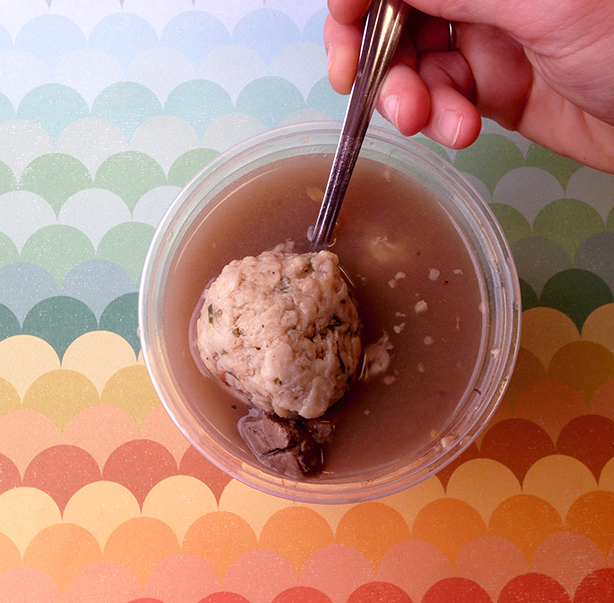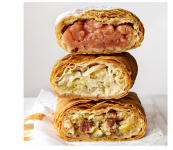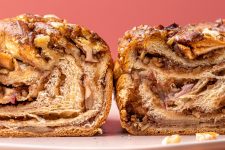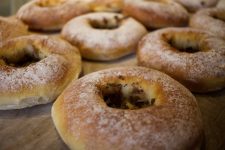For the Love of Goose Fat: We Practice This Forgotten Jewish Culinary Tradition All Year ‘Round

During the holidays, we read an interesting New York Times article from writer Jeffrey Yoskowitz titled “Goose: A Hanukkah Tradition”. In the piece, he talked about a forgotten tradition—the Chanukah goose:
When Hanukkah fell on the Sabbath, Jewish families of means would host a feast with roast goose, latkes fried in its schmaltz and most likely pickled vegetables. ‘The smell of smoking goose fat became the traditional scent’ of Hanukkah, Michael Wex says in his book ‘Rhapsody in Schmaltz.’
Yoskowitz goes on to say that goose was once a focal point of European Jewish cooking even beyond Chanukah, but the tradition didn’t withstand migration to America. The main reason being that geese and their notoriously belligerent dispositions aren’t conducive to the modern factory farm. Chickens, on the other hand, are easier to confine and breed, making them a cheaper, more accessible recipe alternative. These days, buying a goose is more expensive that ever, and Yoskowitz reports that the nine-pounder he recently purchased was a whopping $250!
Here at Zingerman’s we’re passionate about traditional full-flavored foods, so it shouldn’t be a big surprise that, yes, we still use goose and goose fat. In fact, it’s a prized ingredient at the Bakehouse.
Bakehouse co-managing partner Amy Emberling says that the business starting using goose fat while studying Hungarian Jewish cooking. “We were making traditional Hungarian foods, and then we made things that Jews in Hungary made,” explains Amy. “Jews were the goose farmers in Hungary, and I think it was because there was a lot of pork, and they weren’t going to be the pig farmers, so they raised the geese, and they used goose fat in a lot of their foods. That’s why we’ve put it into a couple of our recipes.”
Goose is still prevalent in Hungary. In the markets and in kitchens, you’ll find goose fat and goose lard. Instead of butter, diners are often served a mound of goose fat in Hungarian restaurants.
Currently, we use goose products in our Matzo Ball Soup and cabbage Rétes (a strudel). The inspiration for using goose broth in the soup came from a visit to a restaurant of a famous Hungarian chef—goose leg is also a common addition in Hungary. We source whole geese (along with tubs of goose fat) from local purveyor Schiltz Food, which we roast, putting the meat into the soup and using the bones for the broth.
When we asked Yoskowitz what he thought about us keeping up the tradition, he had this to say: “I was surprised to learn that you use goose fat in your chicken soup and strudel, but not surprised to learn the reason: over the years I’ve come to expect that Zingernman’s cares deeply about such details. I was also a bit surprised since goose fat isn’t that easy to come by, though sources have told me that goose farms are more common in the Midwest. And, yes, it played an incredibly important role in Jewish cuisine across central and eastern Europe. I’m so delighted to know that the tradition continues in the Bakehouse.”
Come get in on the tradition. We serve our Tibor’s Goose & Matzo Ball soup every Friday in the Bakeshop and our Rétes are available daily.
And check out Jefferey Yoskowitz and Liz Alpern’s book The Gefilte Manifesto and online shop.




Zingerman’s Art for Sale